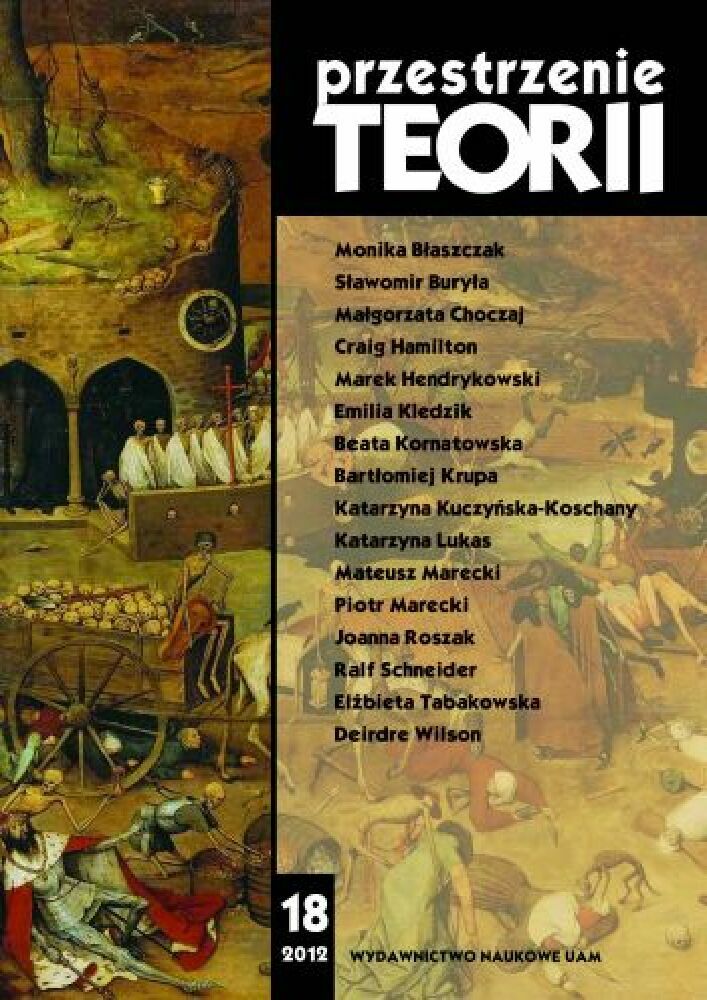Abstrakt
There has been some discussion about how far relevance theory can help in analysing the interpretation of literary works. Starting from the assumption that literary works are not entirely sui generis but exploit at least some of the abilities used in other varieties of verbal communication, I show how the same theoretical machinery used in analysing the interpretation of ordinary utterances can shed light on the interpretation of literary texts, and touch briefly on two more general issues: how can fictional works be relevant, and how can illocutionary and perlocutionary effects be disentangled in the case of literary works? [translated by Deirdre Wilson].Bibliografia
Austen J., 1997, Rozważna i romantyczna, tłum. A. Przedpełska-Trzeciakowska, Warszawa.
Austin J.L., 1962, How to Do Things with Words, Cambridge.
Beardsley M., 1970/1992, The authority of the text, [w:] G. Iseminger (ed.), Intention and Interpretation, Philadelphia: 24-40.
Blakemore D., 2010, Communication and the representation of thought: The use of audience-directed expressions in free indirect thought representation, „Journal of Linguistics” 46: 575-599.
Brooks C., 1947, The Well-Wrought Urn: Studies in the Structure of Poetry, Nowy Jork.
Burns R., 1956, Tam O’Shanter, [w:] R. Burns, Z wierszy szkockich, tłum. S. Kryński, Warszawa.
Carston R., 2002, Thoughts and Utterances: The Pragmatics of Explicit Communication, Oxford.
Carston R., 2010, Metaphor: ad hoc concepts, literal meaning and mental images, „Proceedings of the Aristotelian Society” 110: 295-321.
Clark B., 1996, Stylistic analysis and relevance theory, „Language and Literature” 5: 163-178.
Clark B., 2009, Salient inferences: Pragmatics and The Inheritors, „Language and Literature” 18: 173-213.
Coleridge S.T., 1817/1834, Biographia Literaria, Nowy Jork.
Furlong A., 1996, „Relevance Theory and Literary Interpretation”, niepublikowana rozprawa doktorska, University of London.
Green K., 1997, Butterflies, wheels and the search for literary relevance, „Language and Literature” 6: 133-138.
Hirsch E.D., 1967/1992, In defense of the author, [w:] G. Iseminger (ed.), Intention and Interpretation, Philadelphia: 11-23.
Hirsch E.D., 1976, The Aims of Interpretation, Chicago.
Iseminger G. (ed.), 1992, Intention and Interpretation, Philadelphia.
Kolaiti P., 2009, „The Limits of Expression: Language, Poetry, Thought”, niepublikowana rozprawa doktorska, London University College.
MacMahon B., 1996, Indirectness, rhetoric and interpretative use: Communicative strategies in Browning’s „My Last Duches”, „Language and Literature” 5: 209- 223.
Pilkington A., 2000, Poetic Effects: A Relevance Theory Perspective, Amsterdam.
Pilkington A., MacMahon B. i Clark B., 1997, Looking for an Argument: a response to
Green, „Language and Literature” 6: 139-148.
Reboul A., 1992, Rhetorique et Stylistique de la Fiction, Nancy.
Rich F., 2004, President Linndbergh in 2004, „New York Times”, September 23.
Roth P., 2004a, The Plot Against America, Nowy Jork.
Roth P., 2004b, The story behind „The Plot Against America”, „New York Times”, September 19.
Licencja
Autorzy
Autorzy tekstów przyjętych do publikacji w czasopiśmie „Przestrzeniach Teorii” są zobowiązani do wypełnienia, podpisania i odesłania na adres redakcji umowy o udzielenie nieodpłatnej licencji do utworów, z zobowiązaniem do udzielania sublicencji CC.
Zgodnie z umową, autorzy tekstów opublikowanych w czasopiśmie „Przestrzeniach Teorii” udzielają Uniwersytetowi im. Adama Mickiewicza w Poznaniu niewyłącznej i nieodpłatnej licencji oraz zezwalą na użycie sublicencji Creative Commons Attribution-NonCommercial-NoDerivatives 4.0 International (CC BY-NC-ND 4.0).
Autorzy zachowują prawa do dalszego, swobodnego rozporządzania utworem.
Autorzy, którzy wykorzystują w swoim tekście cudze utwory (np. ilustracje, fotografie) proszeni są o dostarczenie do redakcji czasopisma zgodę na publikację od uprawnionych podmiotów.
Użytkownicy
Zainteresowani użytkownicy internetu uprawnieni są do korzystania z utworów opublikowanych po 2015 roku „Przestrzeniach Teorii” tylko w calach niekomercyjnych, pod następującymi warunkami:
- uznanie autorstwa - obowiązek podania wraz z rozpowszechnionym utworem, informacji, o autorstwie, tytule, źródle (odnośniki do oryginalnego utworu, DOI) oraz samej licencji;
- bez tworzenia utworów zależnych - utwór musi być zachowany w oryginalnej postaci, nie można bez zgody twórcy rozpowszechniać np. tłumaczeń, opracowań.
Do wszystkich tekstów opublikowanych przed 2015 r. prawa autorskie są zastrzeżone.
Inne
Uniwersytet im. Adama Mickiewicza w Poznaniu zachowuje prawo do czasopisma jako całości (układ, forma graficzna, tytuł, projekt okładki, logo itp.).
